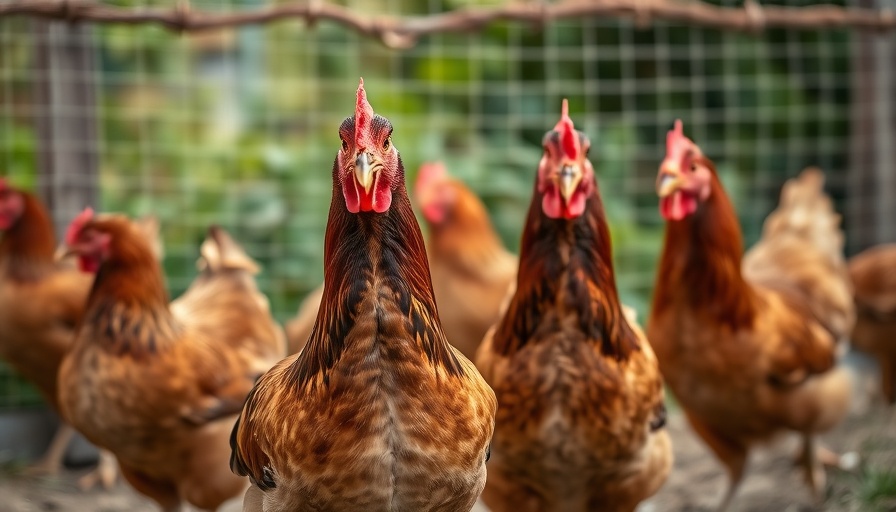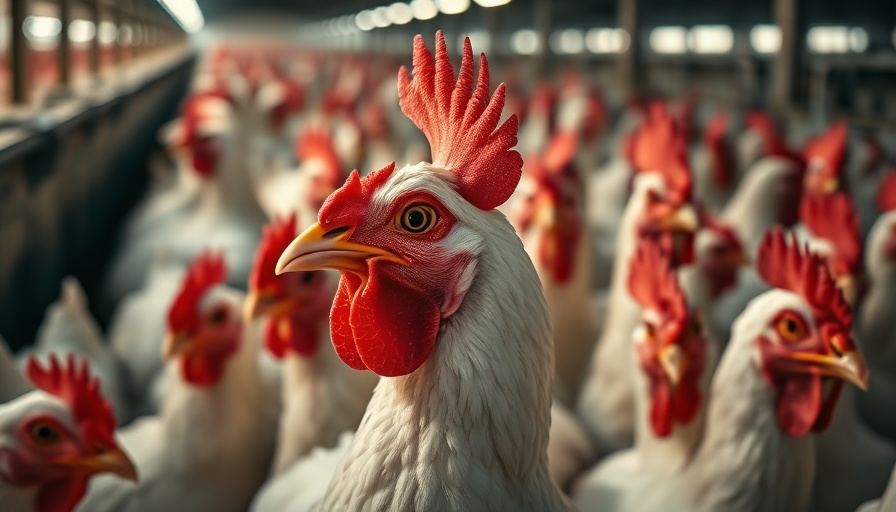
The Recent Bird Flu Outbreak in Cheshire Explained
The highly pathogenic avian influenza, commonly known as bird flu, has struck a poultry farm in Cheshire, England, leading to the culling of over 10,000 birds. This swift action comes after an outbreak was confirmed near Wybunbury, prompting a pronounced response from authorities including the Department for Environment, Food and Rural Affairs (Defra) and the Animal and Plant Health Agency.
Understanding the Precautionary Measures
In light of the outbreak, Defra has established a 3-kilometer protection zone and a 10-kilometer surveillance zone around the affected area. Such measures are vital for limiting the spread of the virus, ensuring that both farmers and wildlife are protected. Chief Veterinary Officer Dr. Christine Middlemiss emphasizes the importance of immediate action, stating that all poultry on-site must be humanely culled to safeguard against the virus' spread.
Poultry Owners: What You Should Know
For poultry keepers across the UK, the current situation underscores the need for enhanced vigilance and biosecurity measures. The government advises bird owners to maintain cleanliness and avoid contact with wild birds, which are often carriers of the virus. Ensuring food and water supplies are enclosed and regularly cleaned can significantly reduce the risk of infection.
Broader Implications for the Poultry Industry
Scientists are closely monitoring this outbreak, as it connects to similar incidents reported in Europe this season. Understanding the transmission pathways of avian influenza from wild to domestic birds can not only help mitigate potential risks but also inform future prevention efforts. It is crucial for industry stakeholders to remain informed and proactive in implementing best practices for poultry health.
Public Health Perspective
One reassuring aspect highlighted by veterinary officials is the low risk posed to public health and food safety in the UK. Authorities maintain that the chances of bird flu affecting consumers are minimal. This statement aims to provide comfort to the public and ensure continued trust in poultry products amidst the outbreak.
Continued surveillance and testing, coupled with stringent biosecurity measures at farms, exemplify a coordinated effort to control this outbreak. The poultry industry stands resilient, yet it must adapt quickly to evolving threats posed by infectious diseases.
As questions arise about the potential for a pandemic, engagement with health authorities and responsive behavior among poultry owners will be crucial in safeguarding not only livestock but public health.
 Add Row
Add Row  Add
Add 




Write A Comment